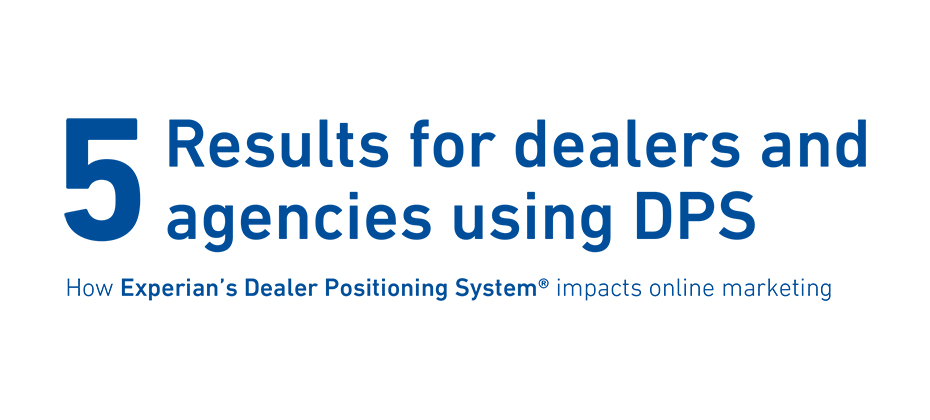Data & Analytics

Marketers are keenly aware of how important it is to “Know thy customer.” Yet customer knowledge isn’t restricted to the marketing-savvy. It’s also essential to credit risk managers and model developers. Identifying and separating customers into distinct groups based on various types of behavior is foundational to building effective custom models. This integral part of custom model development is known as segmentation analysis. Segmentation is the process of dividing customers or prospects into groupings based on similar behaviors such as length of time as a customer or payment patterns like credit card revolvers versus transactors. The more similar or homogeneous the customer grouping, the less variation across the customer segments are included in each segment’s custom model development. So how many scorecards are needed to aptly score and mitigate credit risk? There are several general principles we’ve learned over the course of developing hundreds of models that help determine whether multiple scorecards are warranted and, if so, how many. A robust segmentation analysis contains two components. The first is the generation of potential segments, and the second is the evaluation of such segments. Here I’ll discuss the generation of potential segments within a segmentation scheme. A second blog post will continue with a discussion on evaluation of such segments. When generating a customer segmentation scheme, several approaches are worth considering: heuristic, empirical and combined. A heuristic approach considers business learnings obtained through trial and error or experimental design. Portfolio managers will have insight on how segments of their portfolio behave differently that can and often should be included within a segmentation analysis. An empirical approach is data-driven and involves the use of quantitative techniques to evaluate potential customer segmentation splits. During this approach, statistical analysis is performed to identify forms of behavior across the customer population. Different interactive behavior for different segments of the overall population will correspond to different predictive patterns for these predictor variables, signifying that separate segment scorecards will be beneficial. Finally, a combination of heuristic and empirical approaches considers both the business needs and data-driven results. Once the set of potential customer segments has been identified, the next step in a segmentation analysis is the evaluation of those segments. Stay tuned as we look further into this topic. Learn more about how Experian Decision Analytics can help you with your segmentation or custom model development needs.

In the credit game, the space is deep and diverse. From super prime to prime to subprime consumers, there is much to be learned about how different segments are utilizing credit and navigating the financial services arena. With 78 percent of full-time workers saying they live paycheck-to-paycheck and 71 percent of U.S. workers responding that they live in debt, it is not surprising a sudden life event can plunge a solid credit consumer from prime to subprime within months. Think lost job, divorce or unexpected medical bill. This population is not going away, and they are seeking ways to make ends meet and obtain finances for needs big and small. In many instances, alternative credit data can shed a light on new opportunities for traditional lenders, fintech players and those in the alternative financial space when servicing this specific consumer segment. In a new study, Clarity analyzed the trends and financial behavior of subprime loan users by looking at application and loan data in Clarity’s database, as well as overlaying VantageScore® credit score insights from Experian from 2013 to 2017. Clarity conducted this subprime trends report last year, but this is the first time it factored in VantageScore® credit score data, providing a different lens as to where consumers fall within the credit score tiers. Among the study highlights: Storefront single pay loan customers are becoming more comfortable with applying for online loans, with a growing percentage seeking installment products. For the first time in five years, online single pay lending (payday) saw a reduction in total credit utilization per customer. Online installment, on the other hand, saw an increase. While the number of online installment loans increased by 12 percent and the number of borrowers by only 9 percent, the dollar value grew by 30 percent. Online installment lenders had the greatest percentage increase in average loan amount. California and Texas remain the most significant markets for online lenders, ranking first and second for five years in a row due to population size. There has also been growth in the Midwest. The in-depth report additionally delves into demographics, indicators of financial stability among the subprime market and comparisons between storefront and online product use and performance. “Every year, there are more financial lenders and products emerging to serve this population,” said Andy Sheehan, president of Clarity Services. “It’s important to understand the trends and data associated with these individuals and how they are maneuvering throughout the credit spectrum. As we know, it is often not a linear journey.” The inclusion of the VantageScore® credit score showcased additional findings around prime versus subprime financial behaviors and looks at generational trends. Access Full Report

Traditional credit attributes provide immense value for lenders when making decisions, but when used alone, they are limited to capturing credit behavior during a single moment of time. To add a deeper layer of insight, Experian® today unveiled new trended attributes, aimed at giving lenders a wider view into consumer credit behavior and patterns over time. Ultimately, this helps them expand into new risk segments and better tailor credit offers to meet consumer needs. An Experian analysis shows that custom models developed using Trended 3DTM attributes provide up to a 7 percent lift in predictive performance when compared with models developed using traditional attributes only. “While trended data has been shown to provide additional insight into a consumer’s credit behavior, lack of standardization across different providers has made it a challenge to gain those insights,” said Steve Platt, Experian’s Group President of Decision Analytics and Data Quality. “Trended 3D makes it easy for our clients to get value from trended data in a consistent manner, so they can make more informed decisions across the credit life cycle and, more importantly, give consumers better access to lending options.” Experian’s Trended 3D attributes help lenders unlock valuable insights hidden within credit reports. For example, two people may have similar balances, utilization and risk scores, but their paths to that point may be substantially different. The solution synthesizes a 24-month history of five key credit report fields — balance, credit limit or original loan amount, scheduled payment amount, actual payment amount and last payment date. Lenders can gain insight into: Changes in balances over time Migration patterns from one tradeline or multiple tradelines to another Variations in utilization and credit limits Changes in payment activity and collections Balance transfer and debt consolidation behavior Behavior patterns of revolving trades versus transactional trades Additionally, Trended 3D leverages machine learning techniques to evaluate behavioral data and recognize patterns that previously may have gone undetected. To learn more information about Experian’s Trended 3D attributes, click here.

Expert offers insights into turnkey big data access The data is out there – and there is a lot of it. In the world of credit, there are more than 220 million credit-active consumers. Bolt on insights from the alternative financial services space and that number climbs even higher. So, what can analysts do with this information? With technology and the rise of data scientists, there are certainly opportunities to dig in and explore. To learn more, we chatted with Chris Fricks, data and product expert, responsible for Experian’s Analytical Sandbox™. 1. With the launch of Experian’s all-new Ascend platform, one of the key benefits is full-file access to our Sandbox environment. What exactly can clients access and are there specific tools they need to dig into the data? Clients will have access to monthly snapshots of 12-plus years of the full suite of Experian scores, attributes, and raw credit data covering the full national consumer base. Along with the data access, clients can interact and manipulate the data with the analytic tools they prefer. For example, a client can log into the environment through a standard Citrix portal and land on a Windows desktop. From there, they can access applications like SAS, R, Python, or Tableau to interrogate the data assets and derive the necessary value. 2. How are clients benefiting from this access? What are the top use cases you are seeing? Clients are now able to speed analytic findings to market and iterate through the analytics lifecycle much faster. We are seeing clients are engaging in new model development, reject inferencing, and industry/peer benchmarking. One of the more advanced use cases is related to machine learning – think of artificial intelligence for data analytics. In this instance, we have tools like H2O, a robust source of data for users to draw on, and a platform that is optimized to bring it all together in a cohesive, easy-to-use manner. 3. Our Experian database has details on 220 million credit-active consumers. Is this data anonymized, and how are we ensuring sensitive details are secure? We use the data from our credit database, but we’ve assigned unique consumer-level and trade-level encrypted pins to ensure security. Once the encrypted PINs are assigned, they remain the same over time. Then all PII is scrubbed and everything is rendered de-identifiable from an individual consumer and lender perspective. Our pinning technique allows users to accurately track individual trades and consumers through time, but also prevents any match back to individual consumers and lenders. 4. I imagine having access to so much data could be overwhelming for clients. Is more necessarily better? You’re right. Access to our full credit file can be a lot to handle. While general users will not “actively” use the full file daily, statisticians and data scientists will see an advantage to having access to the larger universe. For example, if a statistician only has access to 10% of the Sandbox and wants to look at a specific region of the country, they may find their self in a situation with limited data that it is no longer statistically significant. By accessing the full file, they can sample down based on the full population from the region they are concerned with analyzing. 5. Who are the best-suited individuals to dig into the Sandbox environment and assess trends and findings? The environment is designed to serve the front-line analysts responsible for coding and analytics that gets reported out to various levels of leadership. It also enables the socialization of those findings with leadership, helping them to interact and give feedback on what they are seeing. Learn more about Experian’s Analytical Sandbox and request a demo.

Today’s consumer lending environment is more dynamic and competitive than ever, with renewed focus on personal loans, marketplace lending and the ever-challenging credit card market. One of the significant learnings from the economic crisis is how digging deeper into consumer credit data can help provide insights into trending behavior and not just point-in-time credit evaluation. For example, I’ve found consumer trending behavior to be very powerful when evaluating risks of credit card revolvers versus transactors. However, trended data can come with its own challenges when the data isn’t interpreted uniformly across multiple data sources. To address these challenges, Experian® has developed trended attributes, which can provide significant lift in the development of segmentation strategies and custom models. These Trended 3DTM attributes are used effectively across the life cycle to drive balance transfers, mitigate high-risk exposure and fine-tune strategies for customers near score cutoffs. One of the things I look for when exploring new trended data is the ability to further understand payment velocity. These characteristics go far beyond revolver and transactor flags, and into the details of consumer usage and trajectory. As illustrated in the chart, a consumer isn’t easily classified into one borrowing persona (revolver, transactor, etc.) or another — it’s a spectrum of use trends. Experian’s Trended 3D provides details needed to understand payment rates, slope of balance growth and even trends in delinquency. These trends provide strong lift across all decisioning strategies to improve your business performance. In recent engagements with lenders, new segmentation tools and data for the development of custom models is at the forefront of the conversation. Risk managers are looking for help leveraging new modeling techniques such as machine learning, but often have challenges moving from prior practices. In addition, attribute governance has been a key area of focus that is addressed with Trended 3D, as it was developed using machine learning techniques and is delivered with the necessary documentation for regulatory conformance. This provides an impressive foundation, allowing you to integrate the most advanced analytics into your credit decisioning. Alternative data isn’t the only source for new consumer insights. Looking at the traditional credit report can still provide so much insight; we simply need to take advantage of new techniques in analytics development. Trended attributes provide a high-definition lens that opens a world of opportunity.

In the world of marketing, this can happen to all of us. We think we know how much ad spend we should put towards a PPC campaign or what time a TV ad should air. In this digital realm, dealers are given a lot of data when a campaign finishes. Technology has pushed our boundaries so now, someone looking at a video of a specific automobile on a social media platform like YouTube can be targeted to receive video advertisements for your dealership. With that said, how do you know if you are targeting the right people? When it comes to your campaigns, you want to know your money is going towards the right forms of advertisements as well as the right demographics. If a campaign is doing well, extending out that campaign can be a better decision compared to letting it end. On the other side, if a campaign is doing poorly, pausing or evening stopping the campaign can be more beneficial in the future. The big questions you must ask yourself are: Am I targeting the wrong people? There can be a few reasons why you may be targeting the wrong people. First, the type of campaign can be incorrect. Social media is the newest and hottest form of marketing, but that may not work with your audience. Second, your demographics may be off. Without knowing the key demographics that you are targeting, you could be blindly targeting customers not interested in your vehicles or not in the market. The opposite could be said for that as well. You may be leaving out potential customers in key geological areas around your dealership. Because of this, you could be losing sales. Targeting doesn’t just stop with humans. You must think about your location and what you have in your inventory. If you are in a state like Colorado, you will want to allocate more SUVs and vehicles that have all-wheel-drive. By advertising rear-wheel-drive or sports cars to individuals that exclusively drive SUVs or only research SUVs, that can be a loss of advertising dollars. What can I do about it? A revamped marketing campaign is a good start for a strategy, but it may not be enough. Targeting can be a difficult endeavor, but thankfully there are programs and companies that can help. Experian Automotive’s Dealer Positioning System® can target key ZIP Code™ and display which campaigns are working - as well as which should be cut. Thanks to this type of data-driven targeting, market share and sales can increase even while advertising spend decreases. Another great aspect of using a system like Experian DPS is the ability to create campaigns to target vehicles your customers want. Like the example above of what not to do, you can formulate a plan of attack to focus on SUVs and light-duty trucks in a mountainous area. Conquesting intelligently not only means more people coming through your door but more allocations for vehicles your customers will want. Marketing is important. Whatever kind of advertising you do, remember that building your dealership is important. Having a solid game plan to conquest around you relies on smart targeting and the correct forms of advertising. Experian DPS can help boost market share and increase sales core models which is very helpful. To learn more about how Experian Automotive can assist with your targeting, click here.

At their heart, car dealers have always been marketers. It's part of learning the trade and understanding the business to gain natural insight into modern marketing and advertising practices. One could even argue that the experience gained through knowledge passed down, trial and error, and exposure to the automotive game itself can yield better strategies than a marketing degree. With all that said, it's still important to have the right data to guide the decisions as well as the tools necessary to decipher the data. Although we have a vast amount of information at our fingertips, it's very possible to truly build on "actionable data" and allow it to define the parameters for a dealership's marketing strategy. One of the most important things to consider when you're building and enhancing your strategies is that the data allows for decision making on the macro and micro levels. We see trend reports, analytics, and test cases that can influence decisions on both sides of the spectrum. Making decisions on the macro level means wholesale changes or additions. For example, the overall effectiveness of a particular classified advertising website can be broken down to determine whether or not it's making the right type of impact. Dealers have so many options today to advertise both online and offline, so making sure that any particular venue is effective is key to success. On the micro level, decisions can be made about how to position the dealership within the individual venues. You may be a big believer in search pay-per-click advertising, for example, and data can help to guide you or your vendor partners to position the dealership properly on search. Knowing which messages about individual cars are effective can be a guide. Then, understanding what zip codes have the highest opportunity level for the individual model can mold your PPC spend, while demographic data can drive effective messaging and help you optimize campaign creative and landing pages. Having access to the data is only the first step. Looking at the data appropriately is an important second step that many dealers are missing. Putting it all together into a decision-driving model is the step that almost every dealer should embrace to allow them to make the best decisions, macro or micro.

Below is our 5 Results for Dealers and Agencies Using DPS infographic.

The auto industry has been riding a wave of prosperity for the past seven years, bouncing back nicely from the 2008 market collapse. But, it looks like rising sales of the past 10 years, are, well...a thing of the past. According to Alix Partners, 2016 sales of 17.5 million units might be the high-water sales mark, at least through 2022. Alix Partners says the next five years sales will range between 15.6 million to 16.8 million annually. Suddenly, it will be challenging for dealers to stay in strong growth mode. How can dealers best react to the tightening market? The Experian white paper “Data Tools Evolve to Give Dealers an Edge in a Tight Sales Market” takes a look at how new and improved data and analytic tools can provide deeper insights to help automotive retailers unlock sales. The paper reviews current market sales statistics, historical sales trends and how dealers reacted during similar market conditions in the past. In addition, the paper provides a look at the challenges faced by automotive retailers, in terms of shrinking gross profit, higher advertising expenses and increased competition. Automotive retailers also will find information on the importance of customer conquesting and a look at technology tools to help provide a deeper understanding and actionable intelligence about local markets. Data and analytics are no longer the private purview of large mega-dealers. The Experian white paper outlines today’s data tools that can be implemented quickly and cost effectively by dealers of any size. To learn more about these trends, download the paper here: https://www.experian.com/automotive/dealerwhitepaper.html

You’ve been tasked with developing a new model or enhancing an existing one, but the available data doesn’t include performance across the entire population of prospective customers. Sound familiar? A standard practice is to infer customer performance by using reject inference, but how can you improve your reject inference design? Reject inference is a technique used to classify the performance outcome of prospective customers within the declined or nonbooked population so this population’s performance reflects its performance had it been booked. A common method is to develop a parceling model using credit bureau attributes pulled at the time of application. This type of data, known as pre-diction data, can be used to predict the outcome of the customer prospect based on a data sample containing observations with known performance. Since the objective of a reject inference model is to classify, not necessarily predict, the outcome of the nonbooked population, data pulled at the end of the performance window can be used to develop the model, provided the accounts being classified are excluded from the attributes used to build the model. This type of data is known as post-diction data. Reject inference parceling models built using post-diction data generally have much higher model performance metrics, such as the KS statistic, also known as the Kolmogorov-Smirnov test, or the Gini coefficient, compared with reject inference parceling models built using pre-diction data. Use of post-diction data within a reject inference model design can boost the reliability of the nonbooked population performance classification. The additional lift in performance of the reject inference model can translate into improvements within the final model design. Post-diction credit bureau data can be easily obtained from Experian along with pre-diction data typically used for predictive model development. The Experian Decision Analytics team can help get you started.

Early reports suggest the 2017 holiday season was a good one for retailers. Consumers were in the mood to spend, and as such, Americans’ total credit card debt continued to climb. Americans planned to spend $862 on gifts for the season, a huge jump from the $752 they planned on spending in 2016. And the numbers were significantly higher than their estimate in any November since 2007 -- just before the 2007-2009 recession. 29% of Americans said they planned to spend more than $1,000. What does this mean for card portfolios? Well, business is booming, but they should also prepare for the time of year when consumers are most apt to seek out debt consolidation and transfer options. A recent NerdWallet analysis revealed the average household that’s carrying credit card debt has a balance of roughly $15,654. Dig deeper into retail card specifically and reports indicate Americans are carrying $1,841 in retail debt. “There is seasonality to consumer credit card behavior,” said Denise McKendall, a credit card and trended data specialist for Experian. “As we roll into the late winter months and early spring, consumers often seek ways to transfer card debt to lower interest rate options, consolidate debt from multiple cards and perhaps even pull out personal loans. This makes it an ideal time for card portfolio managers to leverage data to anticipate consumer behaviors and be able to offer the best rates and options to retain cardholders and grow.” Card portfolio managers should consider these questions: What is my portfolio risk? Did some of my consumers overextend themselves? Do I have collections triggers on my accounts to mitigate risk and manage delinquencies? Which consumers in my portfolio will be looking to consolidate debt? Should I reassess credit line limits? Which of my consumers show a high propensity to make a balance transfer? Do I have opportunities to grow my portfolio by offering attractive rates to new customers? Which customers will leave after low introductory rates expire? Can I use this time of year to become the first credit card consumers’ consistently use, rather than the second or third card they pull from wallet? At first glance, it might appear challenging to answer many of these questions, but with the right data and analytics, a card manager can easily establish a game plan to conquest new business, mitigate risk and retain existing, high-value consumers. The robust holiday season was a boom for the economy. Now card companies need to ready themselves for the aftermath.

As soon as the holiday decorations are packed away and Americans reign in the New Year, the advertisements shift to two of our favorite themes – weight loss and taxes. No wonder the “blues” kick in during February. While taxes aren’t due until April 17, the months of January, February and March have consumers prepping to file. Coincidentally, it is also a big season for lenders to collect after the high-spending months of October through December. “Knowing which of your customers may receive a refund is critical,” said Colleen Rose, an Experian product manager specializing in the collections industry. “This information can help lenders create a strategy to capitalize on this important segment during the compressed collections window.” The industry has become more familiar with trended data and its ability to predict how consumers are faring on the credit score slider, but many don’t know that it has also proven popular in identifying people who may get a tax refund, and who is likely to use a refund to pay down delinquent balances. The past two tax seasons are evaluated to provide a complete picture of a customer’s behavior during tax refund season. Balance, credit limit and other historical fields are incorporated with tradeline-level data to determine who paid down their delinquent balances during this time. According to the IRS, in fiscal year 2016, the average individual income tax refund was about $3,050, so it’s a prime time for consumers to come into some unexpected cash to either pay down debt or spend. It’s estimated that 35% of consumers who get a refund will pay down debt. “Using Experian’s trended data attributes, we’ve identified past-due customers who paid down a delinquent tradeline balance by at least 10% and made a large payment during tax season,” said Rose. “With these specific attributes, we can help clients target a very desirable population during the critical collections months, helping them to refine their campaigns and create offers geared toward this population.” Anticipating who is likely to receive a refund and use it to pay down debt can influence how collections departments develop their messaging, call outreach and mailings. And for consumers who owe multiple debts, these well-timed touchpoints and messages could influence who they pay back first. The collectors with the best data, once again win, with trended data providing the secret sauce for predictions. ‘Tis the season for taxes.

You just finished redeveloping an existing scorecard, and now it’s time to replace the old with the new. If not properly planned, switching from one scorecard to another within a decisioning or scoring system can be disruptive. Once a scorecard has been redeveloped, it’s important to measure the impact of changes within the strategy as a result of replacing the old model with the new one. Evaluating such changes and modifying the strategy where needed will not only optimize strategy performance, but also maximize the full value of the newly redeveloped model. Such an impact assessment can be completed with a swap set analysis. The phrase swap set refers to “swapping out” a set of customer accounts — generally bad accounts — and replacing them with, or “swapping in,” a set of good customer accounts. Swap-ins are the customer population segment you didn’t previously approve under the old model but would approve with the new model. Swap-outs are the customer population segment you previously approved with the old model but wouldn’t approve with the new model. A worthy objective is to replace bad accounts with good accounts, thereby reducing the overall bad rate. However, different approaches can be used when evaluating swap sets to optimize your strategy and keep: The same overall bad rate while increasing the approval rate. The same approval rate while lowering the bad rate. The same approval and bad rate but increase the customer activation or customer response rates. It’s also important to assess the population that doesn’t change — the population that would be approved or declined using either the old or new model. The following chart highlights the three customer segments within a swap set analysis. With the incumbent model, the bad rate is 8.3%. With the new model, however, the bad rate is 4.9%. This is a reduction in the bad rate of 3.4 percentage points or a 41% improvement in the bad rate. This type of planning also is beneficial when replacing a generic model with another or a custom-developed model. Click here to learn more about how the Experian Decision Analytics team can help you manage the impacts of migrating from a legacy model to a newly developed model.

Alternative Data Shedding New Light on Consumers Why Investors Want Alternative Data Banks and Tech Firms Battle Over Something Akin to Gold: Your Data Alternative data for credit has created national headlines in the past year and a lasting buzz in the financial services world. But what exactly qualifies as alternative data in credit? How can it benefit lenders? Consumers? Ask two people these questions and you may get very different answers. Experian defines alternative data as FCRA-compliant data points that are not typically considered when evaluating a potential customer’s creditworthiness. These data points may include rent payments; utility payments, including gas, electric; telecommunications payments, such as mobile telephones; insurance payments; and any other recurring financial obligations. Taking these alternative data points into account can benefit consumers and lenders in multiple ways. Consider that roughly 45 million Americans have either no credit history, or a credit history that is too scarce or outdated to manufacture a credit score. This group of consumers includes not only minority consumers or those from low income neighborhoods, but also the shared economy workforce and millennials without traditional credit histories. Some estimate 121 million U.S. adults are credit-challenged with thin-to-no credit file and subprime credit scores below 600. “People with little or no credit history, or who lack a credit score, have fewer opportunities to borrow money to build a future, and any credit that is available usually costs more,” said Richard Cordray, while he was director of the Consumer Financial Protection Bureau. Indeed, these consumers are in a catch-22; many lenders will not lend to consumers with credit scores of under 620. In turn, these consumers have trouble building credit, and they are blocked from achieving goals like buying a car, owning a home or starting a business. By combining credit reports with alternative data, a more complete picture of subprime, near-prime and thin-file consumers can develop. And analysis of this data can help lenders evaluate a consumer’s ability to pay. When alternative data like rent payments and an individual’s short term lending history are trended appropriately, it can be an accurate predictor of an individual’s financial behavior, and can be an important step toward promoting greater financial inclusion for more consumers. In addition to using alternative data in underwriting, lenders can leverage the data to help with: Expanding the prospecting universe. Data can be used to enrich batch prospecting decisioning criteria to identify better qualified prospects, suppress high-risk consumers, and offer a more complete borrowing history Account review. Alternative data can help signal a consumer’s financial distress earlier, better manage credit lines and grow relationships with existing consumers. Collections. Identify consumers who are rebuilding credit with specialty finance trades, or who are exhibiting high-risk behaviors in the alternative financial services space. More info on Alternative Credit Data More Info on Alternative Financial Services

As we enter the holiday season, headlines abound around the shifts and trends in retail. How are consumers shopping? What are they buying online versus in-store? How can retailers maintain share and thrive? To gain some fresh perspective on the retail space, we interviewed John Squire, CEO and co-founder of DynamicAction, a business featuring advanced analytics solutions designed specifically for eCommerce, store and omnichannel retail teams. Squire has had a tenured career in the retail and technology sectors serving in key executive roles for IBM Smarter Commerce and Coremetrics. He has spent the past decade guiding nearly every retail brand to a better understanding of their customers and utilization of their data to make profitable decisions. Business headlines claim we are in the midst of a retail apocalypse. Is this statement a reality? The reality is that retail is in a renaissance – a revolution driven by the most empowered, connected consumer in history, a burgeoning technology infrastructure and retail tech innovators who have disrupted the status quo. The most agile of retailers and brands are leaning forward to serve their customer with remarkable experiences in the store, online and anywhere the customer decides to interact with the brand. And for those retailers, the days ahead are filled with newfound opportunity. However, the retailers and brands who don’t have a strong core purpose beyond being filler between anchor stores may no longer have a place in this new world of retail. The strongest retailers and brands will tap into their wealth of customer data to better understand, and therefore better serve their customers, creating long-term relationships. They should only continue gain in strength as consumers concentrate more and more of their time (and wallets) with businesses that passionately focus on their unique needs and buying patterns. It seems like shoppers are increasingly turning online to make their purchases. Is this the case, and do we see seasonal spikes with this trend? The key for successful retailers is to understand that customers aren’t just searching, browsing, buying and returning online OR in-store. They are shopping online AND in-store … and even online while in-store. Shoppers simply do not see channels, and the sooner that retailers reorganize their mindset, their organizations and their data understanding around this reality, the more successful they will become. Shoppers are indeed moving online with increasing frequency and larger amounts of their overall spending. Connecting data across the enterprise, across their partners and across social channels is critical in enabling their retailing teams to make decisions on how best to simultaneously serve their customers and their company’s shareholders. If retailers have a store credit card to offer to consumers, how can they encourage use and get them to maximize spend? Are there particular strategies they should employ? As with any loyalty program or service item, consumers are looking for tools and offers they value. Therein lies the opportunity and the challenge. Value can come in many forms, depending on the individual. Does the credit card offer travel or retail points, or dollars that they can accumulate? Does the credit card save them time? Provide them with additional purchasing power? Reduce their friction of making large purchases? Increase the security of the initial purchase and long-time use of the product or service? The competition for just a consumer’s current and future wallet is being upended by retailing offers that are serving up entertainment, services, convenience and broader product selections. Understanding the high-value activities correlated to their VIP consumers generating the highest amount of profit for the business is the essential to building strategies for encouraging card use. Beyond online shopping, are there other retail trends you see emerging in the coming year? What excites you about the space? Online shopping is not a trend; it is retail’s greatest disruption of the last 100 years. Digitization of shopping in both the online and store setting is what thrills me. One to watch is Wal-mart. The company is taking a highly energized track to build a business of next-gen brands and using their supply chain acumen to battle Amazon, while simultaneously gaining huge amounts of market share from other less sophisticated and strong retailers. In addition, seeing how next-gen brands like Warby Parker, Everlane, Untuckit, Bonobos, Indochino and Rent the Runway are rapidly building out a store experience, albeit radically different than the stores of the past, is exciting to watch. Seeing the growth in Drone deliveries outside the US for retail and commercial applications is surely the next big jump for ‘Next Hour’ in-home delivery. Made-to-order with a very short lead-time is also a big trend to keep an eye on. However, what excites me most in the industry is the universal mind shift that is becoming undeniable in retail: that data understanding and action will be the very basis for customer centricity and companies’ growth. Retailers have had access to these data pools for ages, but the ability to sync the data sets across channels, make sense of the findings and take action at the speed the consumer expects is truly the next leap forward for great retailers. To learn more about the state of retail credit cards, access our latest report.